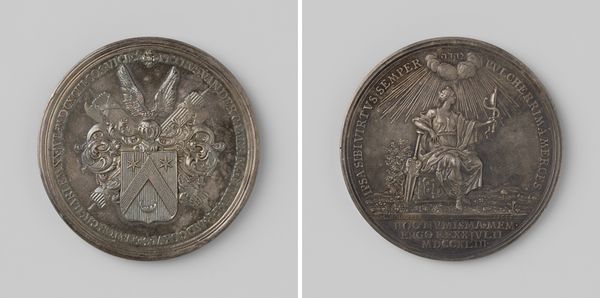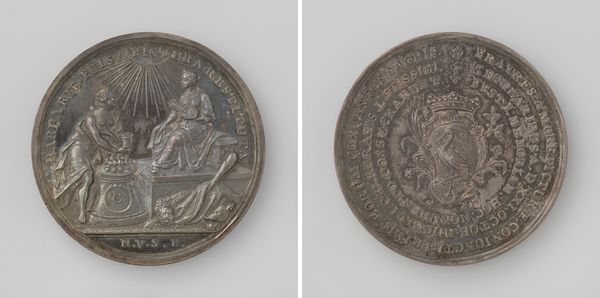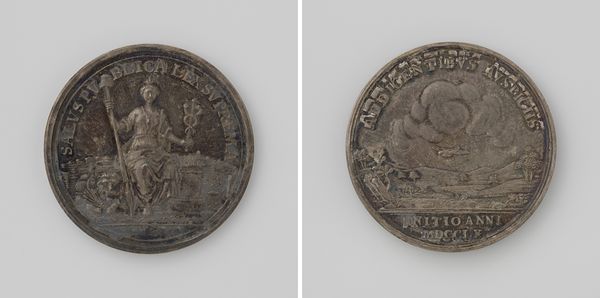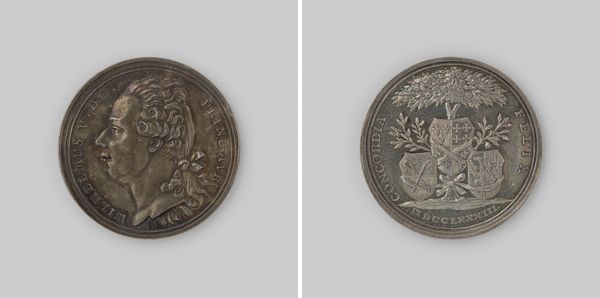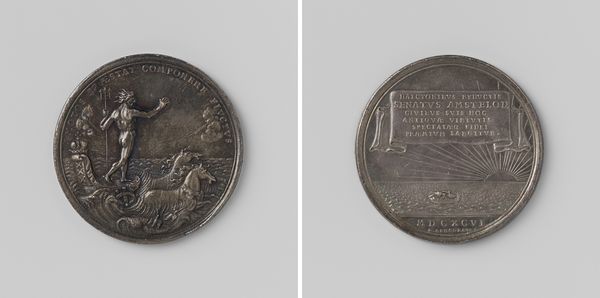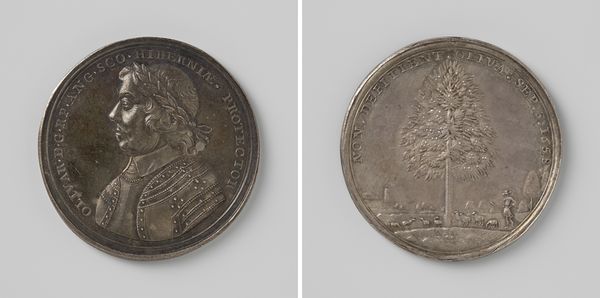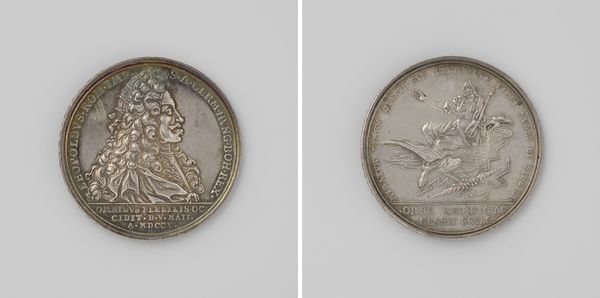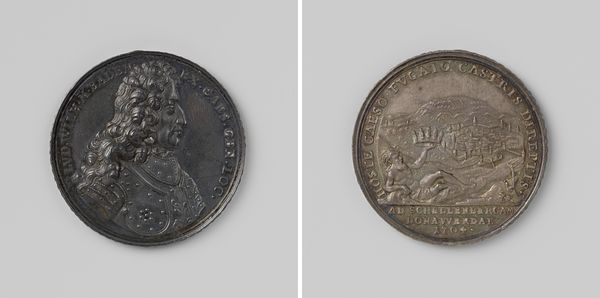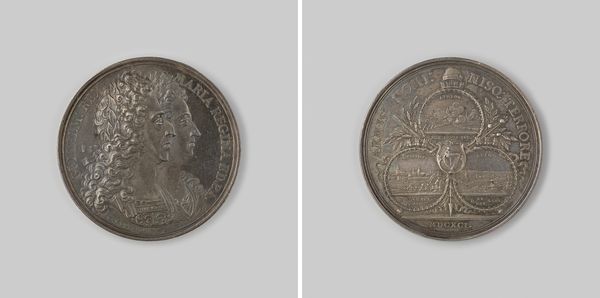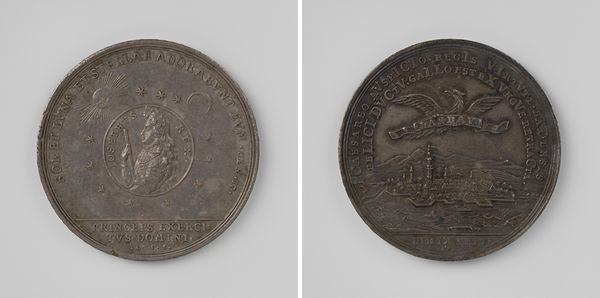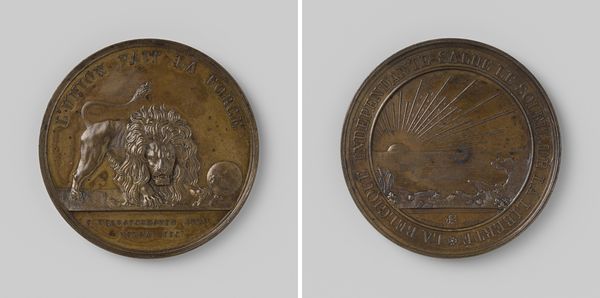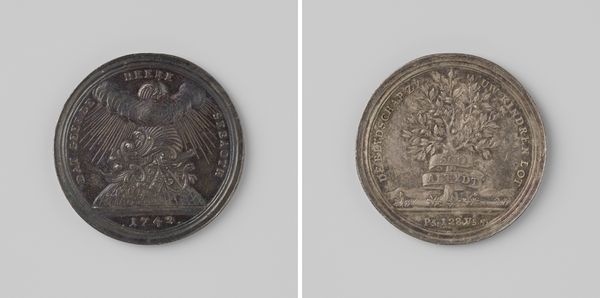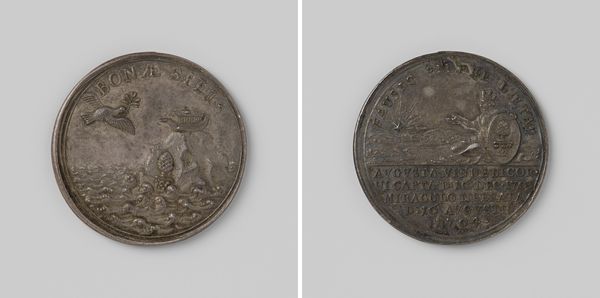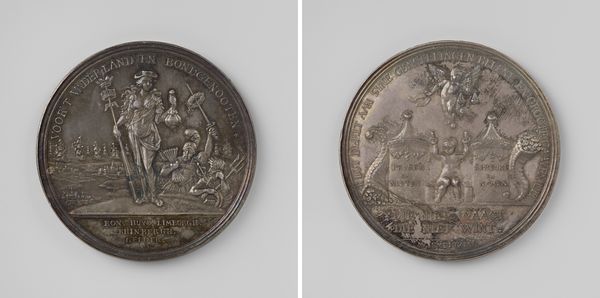
print, metal, relief, sculpture, engraving
#
medal
#
baroque
# print
#
metal
#
sculpture
#
relief
#
sculpture
#
ceramic
#
engraving
Dimensions: diameter 4.3 cm, weight 32.56 gr
Copyright: Rijks Museum: Open Domain
Editor: This medal, titled "Oprichting van een Luthers weeshuis in 's-Gravenhage" from 1733, by Nicolaas van Swinderen, looks to be made from metal, likely silver. It's quite detailed! I am struck by how the imagery focuses on this sort of stoic, rather rigid scene. How would you interpret this work, especially thinking about the artist's choices? Curator: The medal is quite revealing, focusing on the processes of patronage and production surrounding charity. Who was commissioning such a piece, and what does the material itself, silver, say about the affluence associated with such institutions? We can consider how medals like this were not simply aesthetic objects but also functioned as a form of currency—cultural currency, that is. Who was van Swinderen working for here, and how would they be distributing this object? Editor: That's interesting, so the material itself speaks to a certain class of individuals, almost like advertising? The creation and distribution become key aspects of interpreting its meaning. Curator: Precisely! Think about the labor involved: the mining of the silver, the artisan’s skill in engraving…these are often obscured when we only focus on the artwork’s subject. What about the implications of choosing metal for a project such as the building of a Luthers weeshuis? What could have been other more common material choices, and what statement does that choice make? Editor: So by emphasizing the labor, materiality, and patronage, we see how this medal reflects broader economic and social structures rather than just the orphanage's establishment. Curator: Exactly. And consider the circulation of these objects; were they meant to be distributed widely or held within a select group? That, too, speaks volumes about its purpose. It helps us understand the relationship between artistic production and the society that shaped it. Editor: This has definitely shifted my perspective. I will consider the who, how, and why surrounding the actual production next time. Curator: Remember, art isn't created in a vacuum. Looking at the tangible realities can reveal so much.
Comments
No comments
Be the first to comment and join the conversation on the ultimate creative platform.
